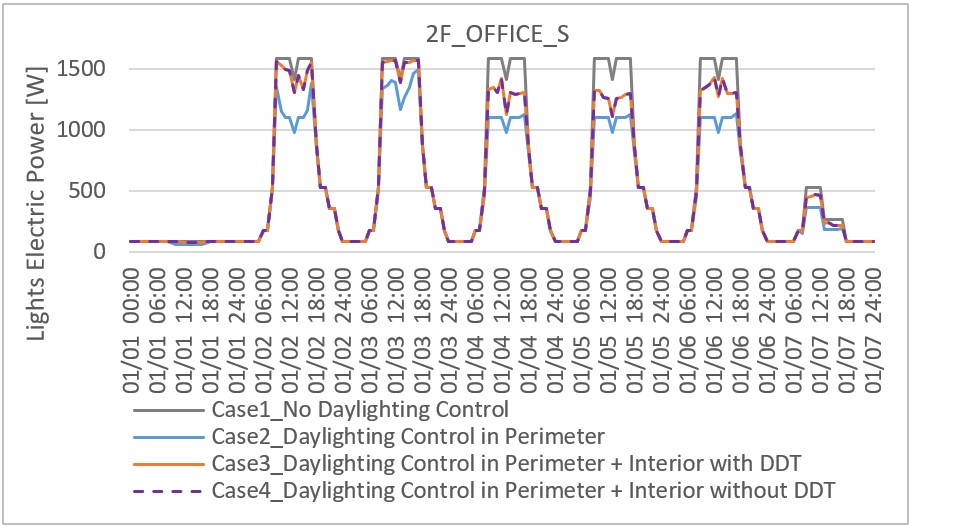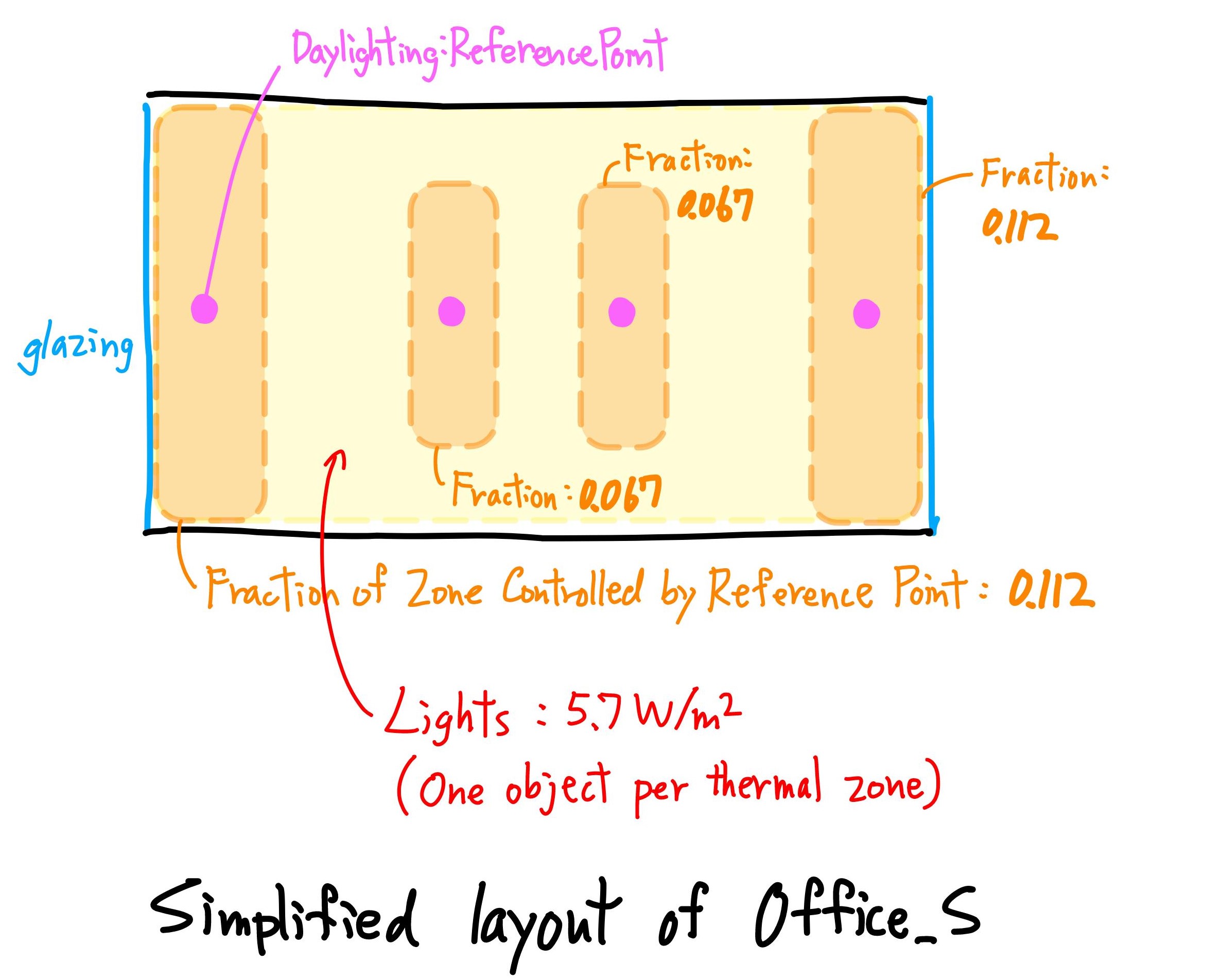Here are 3 idf files for a virtual office tower with different daylighting control settings. Their version is 8.9.0.
- Case1: No daylighting control
- Case2: Daylighting control in perimeter zone
- Case3: Daylighting control in perimeter zone and interior zone with
DaylightingDevice:Tubular
Case3 was created by adding DaylightingDevice:Tubular to Case2. However, lighting power in Case3 is higher than that in Case2. This is the problem. I don't know why.
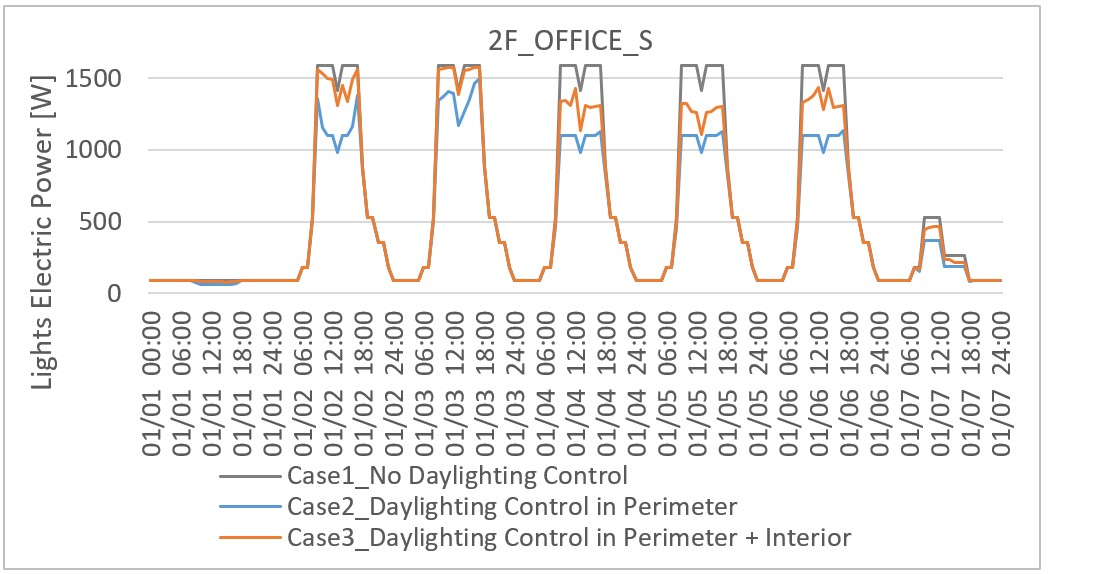
This is the 3D model. Only typical floors are modelled and multiplied. Vertical fins cover around the façade.
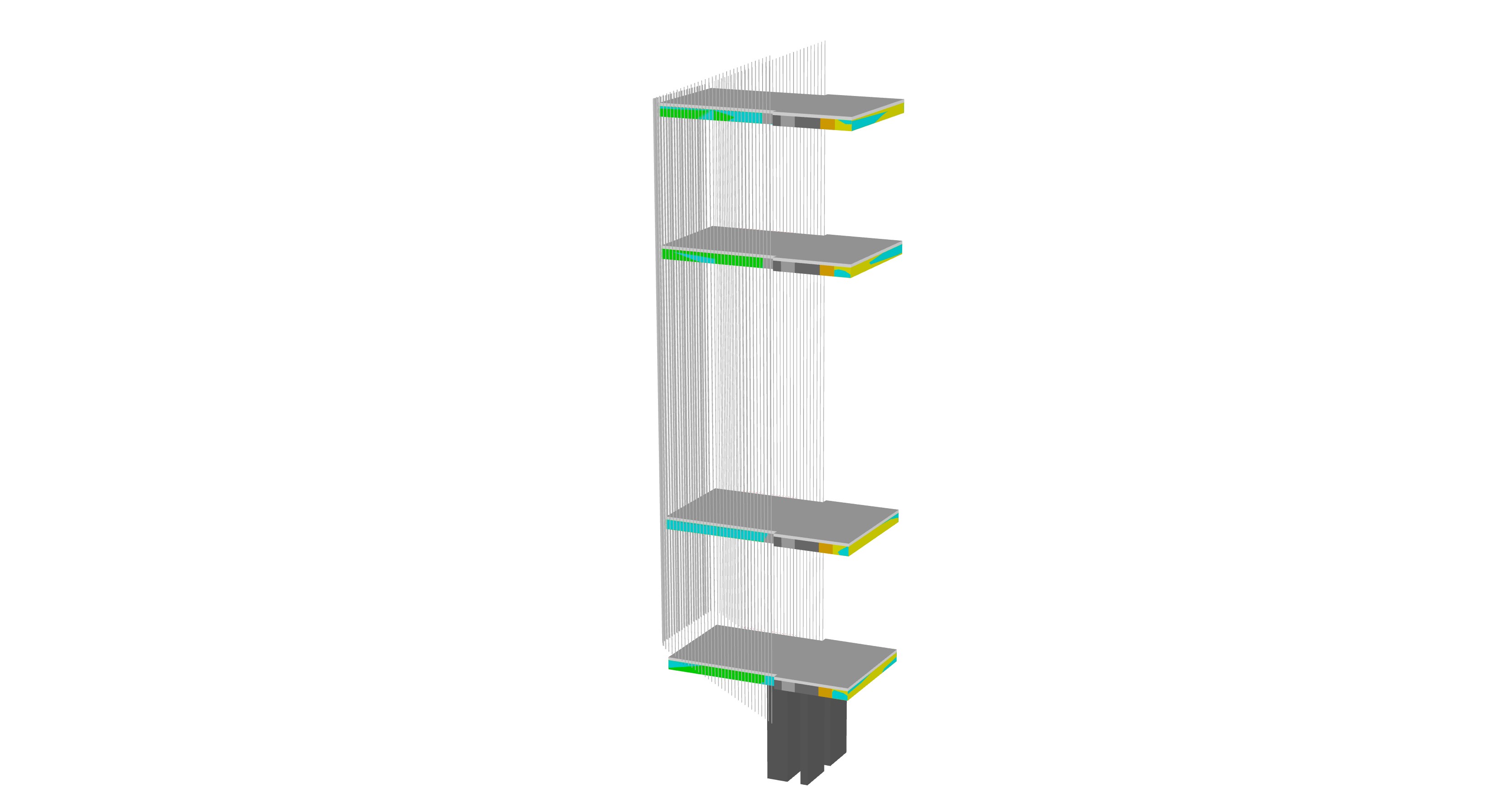
DaylightingDevice:Tubular in this model is not used in the usual way. Domes are not on the rooftop but on the wall. They are vertical. Diffusers are on the ceiling. The dome and the diffuser are not in a straight line. This system is not DaylightingDevice:Self, but more like DaylightingDevice:Tubular. Please refer to the sketch below.
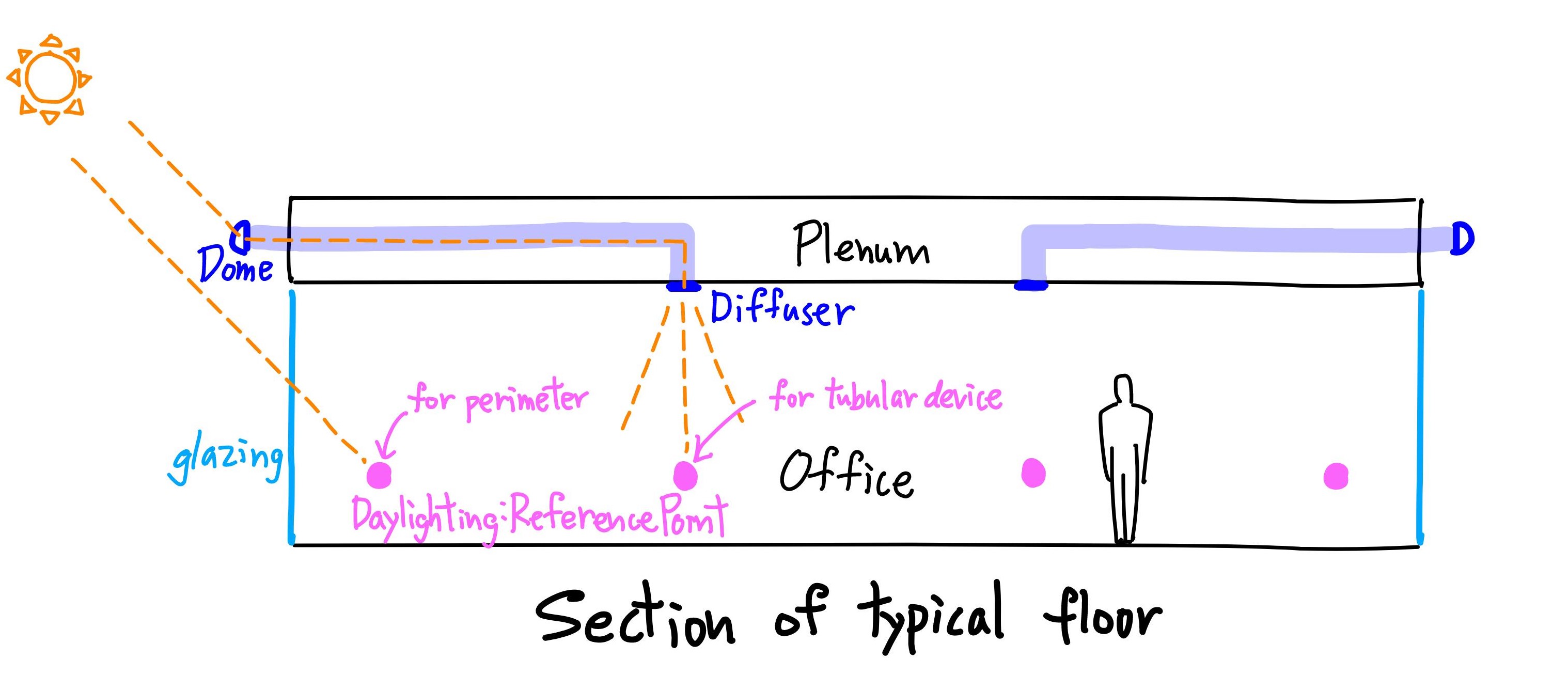
The increase of lighting power might be due to this unusual modelling, but I don't know what is actually not allowed in EnergyPlus.
DaylightingDevice:Tubular is in Office_N and Office_S on each floor. Perimeter area and Interior area are not separated. So, one zone has Daylighting:ReferencePoints for both exterior glazing and DaylightingDevice:Tubular. The simulation result looks as if DaylightingDevice:Tubular is offsetting the lighting power reduction in the perimeter area. It's weird.
Does anyone have any idea why DaylightingDevice:Tubular increases lighting power?


